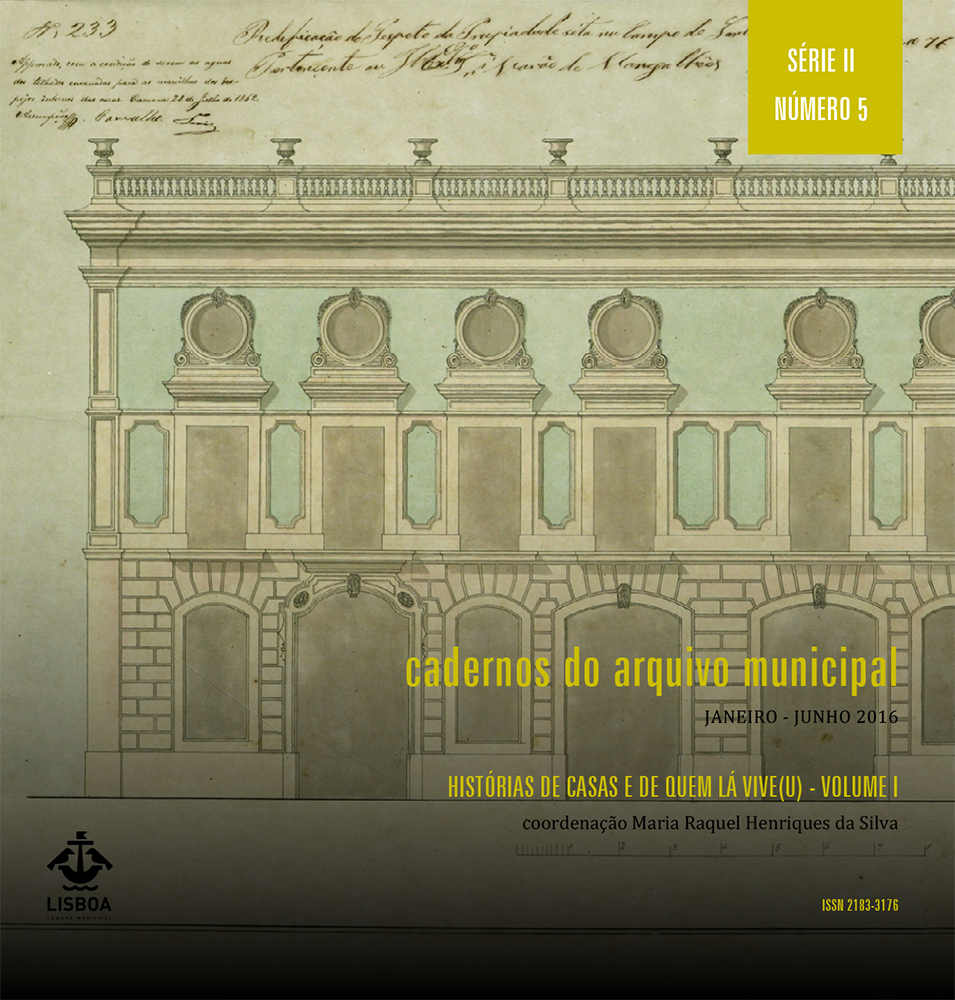The Herdade de São Roque (Saint Roch’s estate) of the Lisbon Trinity Convent Its origin and urbanization in 1554-1555 integrated the Bairro Alto and analysis of one of its lots, the Palace of the Counts of Tomar, the former municipal newspapers library
DOI:
https://doi.org/10.48751/CAM-2016-5219Keywords:
Bairro Alto, Architecture, Palace of the Counts of Tomar, Azulejos, UrbanismAbstract
Initially, the area around the Trinity Monastery was an olive grove in the urban fringe of Lisbon. In the fourteenth century, the Fernandine Wall divided it getting a portion inside walls, which was urbanized in the early sixteenth century, and a portion outside, called Herdade de São Roque (Saint Roch’s estate) urbanized much later, by the mid-century. The subdivision and urbanization took place quickly and, by analyzing the confrontation, it was possible to identify each lot and its original owners. Three of these lots have given rise to the current Palace of the Counts of Tomar, property that has received a great artistic campaign in the nineteenth century, visible in its monumental staircase, in its interior stucco works, and in the facade of Italian Baroque taste, but preserved in the interior walls several traces of its initial phase, of the mid-sixteenth century, and of the neighbouring parcels’ absorption process.
Downloads
Downloads
Published
How to Cite
Issue
Section
License
Copyright (c) 2016 João Miguel Simões

This work is licensed under a Creative Commons Attribution-NonCommercial 4.0 International License.
The authors retain copyright and grant the journal the right of first publication, with the work simultaneously licensed under the Creative Commons Attribution License CC BY-NC 4.0 which allows sharing and adapting the text as long as its authorship is correctly attribbuted with recognition of the initial publication in this journal.









